Fundraising disruptions and social distancing guidelines caused by COVID-19 have led to a rise in nonprofit digital transformation. We break down how charities and aid groups have used digital technology to adapt.
Like most industries, the nonprofit sector suffered a severe blow at the height of the pandemic. According to a survey by the Nonprofit Leadership Center, nonprofits and charities identified fundraising as the top challenge during the pandemic.
This is not exactly surprising — finances have always been the big operational concern of charities and nonprofit organisations. But the data is nevertheless concerning.
According to a survey by Independent Sector, a coalition of nonprofits, foundations and corporate giving programmes, 83% of organisations in 2020 saw their revenues decline compared to the previous year. By April 2020, these organisations reported a 47% reduction in jobs.
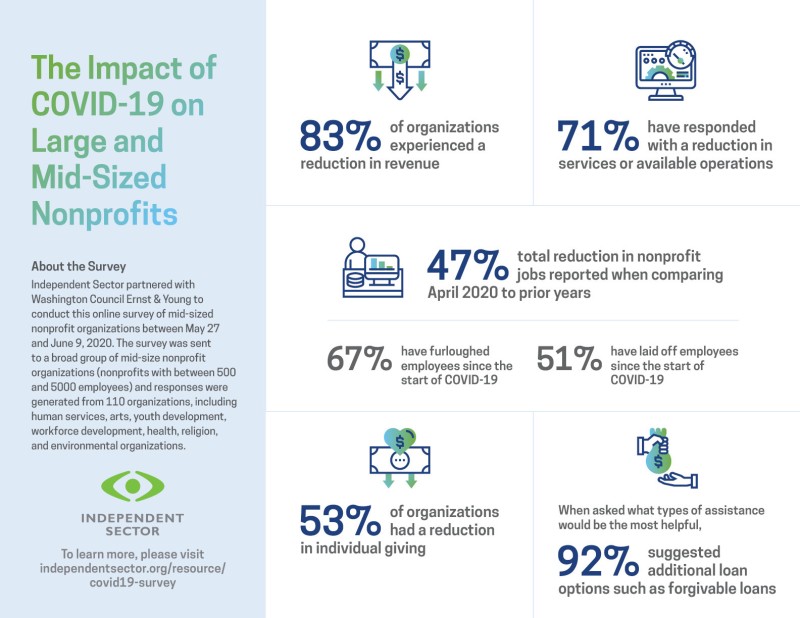
All this is ironic when you consider how the crisis highlighted the important role of charities and nonprofits in providing aid to marginalised groups and underserved communities. Charities Aid Foundation (CAF) reports that 25% of the charities they surveyed reported increased demand for services and are in more need of funding.
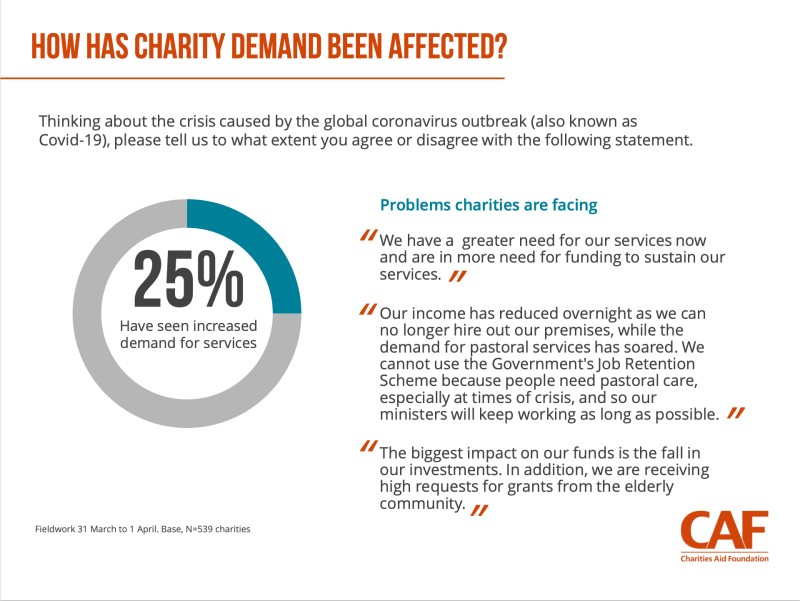
Challenges in fundraising are exacerbated by the fact that nonprofits do their best work in face-to-face interactions. These include passing out meals, providing healthcare or running an educational activity — things that don’t exactly lend themselves to social distancing.
The situation has called for out-of-the-box solutions. This is where nonprofit digital transformation comes in.
Nonprofit digital transformation to the rescue
COVID-19 disruptions led to 40.5% of nonprofit leaders identifying adaptability as the most important factor to their organisation’s success.
In today’s digital world, technology is arguably the biggest factor that can change the way you generate revenue and engage your stakeholders. This is a process known as digital transformation — a broad term that refers to any instance of using digital technology to create new or modify existing processes, products and services.
This isn’t just about buying a new computer so your accounting team can track your finances more efficiently. For philanthropic groups, digital transformation can also represent a change in your culture. Adopting new technologies, whether it’s artificial intelligence (AI), automation, the cloud, data analytics or the Internet of things (IoT), among others, can fundamentally change how you deliver value to your donors, volunteers and other key stakeholders.
Does nonprofit digital transformation offer any value?
Much of the conversation around digital transformation is often centred on small and medium-sized enterprises and large corporations. For example, a survey by global consultancy firm Capgemini found that 87% of businesses believe digital transformation to be integral to their competitive advantage.
But the transformative benefits of digital technology also extend to the philanthropic landscape. Unfortunately, nonprofits still find themselves struggling to figure out how to integrate tech into their strategy. Case in point: a NetChange Consulting report shows that nine out of 10 nonprofits with centralised teams report a lower digital programme impact.

This isn’t a problem exclusive to nonprofit organisations. According to a Pulsant survey, while 84% of IT decision makers state that their businesses have a clear understanding of digital transformation, 68% do not have a digital transformation plan and 11% said they are approaching business transformation on an ad hoc basis.
How can nonprofits and charities embrace digital transformation?
Before organisations can embark on their nonprofit digital transformation journey, it’s a good idea to first understand the areas they can improve or streamline with technology.
1. Chatbots: automating fundraising on your digital channels
Despite furloughs and reductions in disposable income due to COVID-19, 20% of UK adults said they would donate more than usual during the middle of the pandemic, according to research by Charities Aid Foundation.

But the coronavirus crisis also demonstrated that limiting face-to-face interactions has a dramatic impact on fundraising. Fortunately, there are ways to do it digitally. The Status of UK Fundraising 2020 Report shows 60% of charities turned to virtual fundraising during the pandemic — of that percentage, 75% did it for the first time.
By deploying chatbots to your nonprofit’s digital channels, such as Facebook Messenger, WhatsApp or Telegram, you can automate many of your core fundraising activities. Here’s how:
Donor engagement
For example, chatbots can help you overcome your donors’ most common objections without requiring human intervention. When engaging charities, most people typically have the following questions:
- How do I donate?
- How much can I donate?
- Where do the donations go?
- Where do I learn more about your cause?
- How can I share a link and raise more donations through my friends and family?
Your chatbots can be programmed to answer your donors’ most frequently asked questions, saving them the trouble of having to scroll through a wall of text on your website.
For example, Mencap’s “Here I Am Campaign” uses a chatbot that signposts users to information about learning disabilities. The AI chatbot provides an AI-powered and non-judgemental digital service that answers people’s questions about disabilities, helping break down stereotypes and misinformed assumptions about learning disabilities.
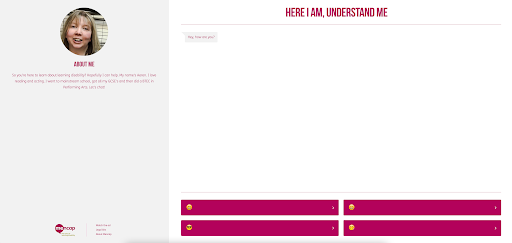
Mencap’s example shows how chatbots can offer a more efficient way of disseminating information about your nonprofit’s mission, allowing potential donors to find the information they need where and when they need it — a user experience feature known as self-service.
You can also integrate your chatbot with third-party payment providers to allow donors to make payments within the chat itself. At Futr, for example, our chatbot integrates with payment platforms like PayPal and Stripe, creating a frictionless experience for donors.
Automated volunteer support
Chatbots can be programmed to engage your workers and volunteers at all times. This is great when doing fieldwork or door-to-door collections. They can also provide an instant link between volunteers and beneficiaries without requiring human intervention. For example, the World Food Program used chatbots in its missions in Nigeria to ask local communities about food prices, weather and food security through SMS.
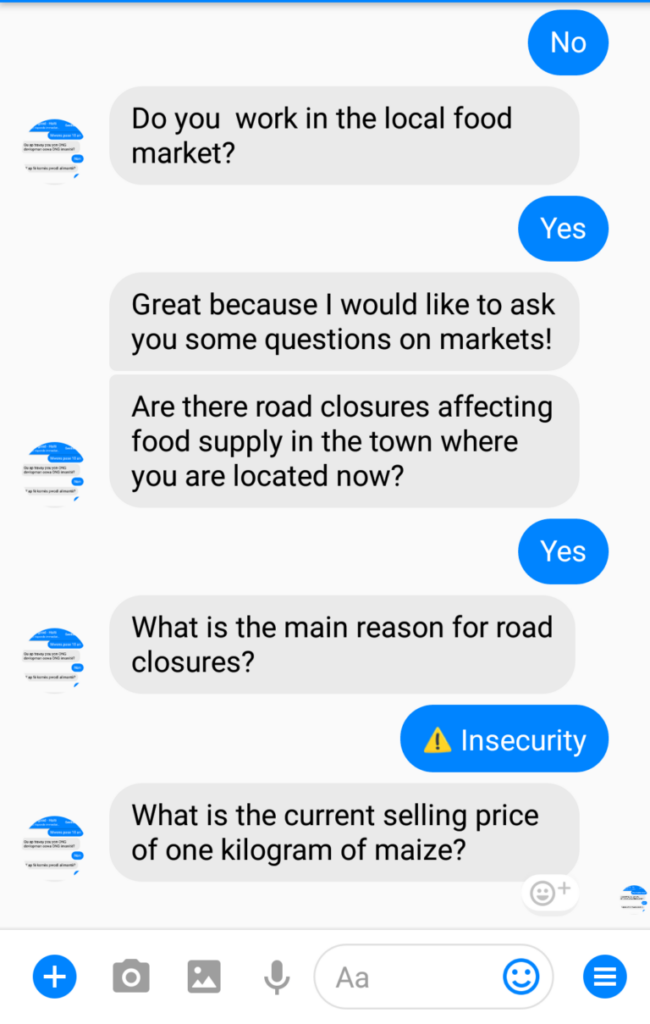
Whenever your team needs access to your internal knowledge base, volunteer guides and resources, they simply need to engage your chatbot on your intranet channels, whether it’s Slack, Microsoft Teams or Facebook Messenger. Your chatbots can also send automated updates and reminders to volunteers and staff, keeping them in the loop at all times.
Assisting with core service delivery
Digital technologies can also help charities deliver their core services to their beneficiaries. For example, the Campaign Against Living Miserably (CALM), a suicide prevention charity, uses chatbots from Futr to support people in need, lending an ear when they need it the most.
CALM’s chatbot answers questions from users, reduces wait times and queues, triages queries, and escalates people who need urgent help to a live agent. This dimension of digital transformation is less about fundraising but more about freeing up your agents’ time so they can focus on people that need help the most.
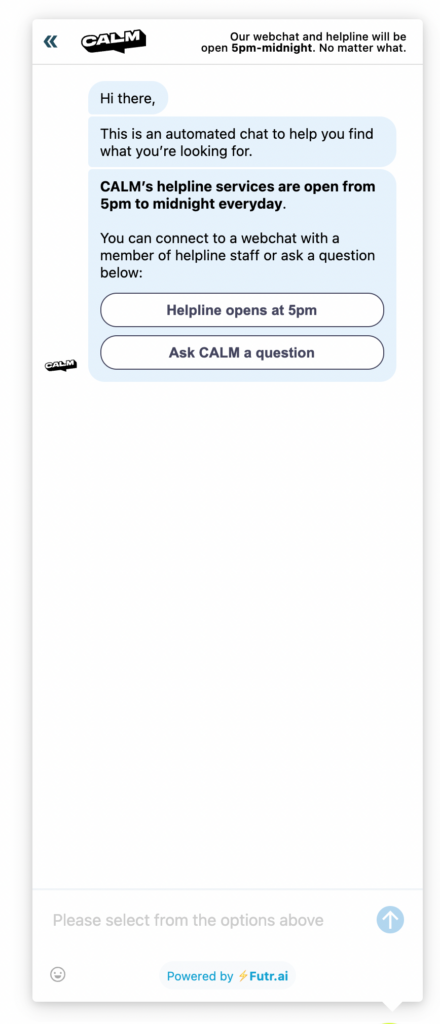
Case in point: Since deploying their chatbot, CALM has managed to reduce queue times by an average of 73% and automatically respond to queries in 1.3 seconds.
2. Data analytics: unlocking insights about your donors and volunteers
When donations are low, nonprofit organisations need to be smarter with their use of resources and depend on more targeted campaigning. The most effective nonprofit digital transformation projects all have one thing in common — they use data analytics.
Nonprofits and charities sit on a goldmine of information that can help them understand their donors’ individual giving habits, the effectiveness of their marketing messages and common objections to giving. Insights from donor data can help improve decision-making and encourage contributions even under difficult conditions.
In fact, IBM reports that 78% of nonprofits that use advanced analytics are more effective than those that don’t.

The benefits of leveraging data analytics in your nonprofit organisation include:
Growing membership and improving retention
Data analytics can help you improve your ability to recruit and retain members by providing insight into their common characteristics, preferences, behaviours and feedback.
This information can help you improve the effectiveness of your marketing campaigns — for example, by allowing you to target ads and messages towards specific audiences that match your “ideal” member.
You can also use insights from your data analytics to predict when people are most likely to renew their memberships and/or leave your organisation based on historical performance.
Optimising fundraising
Data analytics can help you optimise your fundraising efforts and discover opportunities to engage donors at the best times of the year (when they’re most likely to donate) or cross-sell other projects and causes that they may be interested in.
You can also uncover insights about:
- Your donors’ preferred methods of donating
- The type of items they’re donating most (in the case of charity shops, for example)
- The average donation amount per donor/member
- The most favourable target markets and locations for fundraising.
With data, nonprofits can use their limited resources wisely and raise donations through channels, places and media that drive the best results.
Transparent reporting
Both the public and donors should have the confidence that any money being donated to charity reaches the intended beneficiaries. Data analytics can help you create detailed trustees’ annual reports by crunching multiple datasets, providing both a bird’s eye view and granular perspective of your operations.
This kind of reporting can help you understand the true cost of running your charity. For example, you can look at the impact of your staffing choices, marketing spend and fundraising events, among others. The insights from these reports will help you make data-driven decisions and plan for better outcomes in the future.
Budgeting
Finally, data analytics can help your nonprofit improve the visibility of your spending, allowing you to stay within budget. By combining historical spend data with donor activity, you can create accurate revenue forecasts and identify your peak and lean months.
You can then create models for different scenarios, helping you protect your organisation’s financial health even during worst-case scenarios. Best of all, data analytics uses real-time data, allowing you to make faster decisions.
How to integrate data analytics into your nonprofit
To start using data analytics in your organisation, you’ll first need to go through the following steps:
- Look for an analytics tool for your organisation. For example, if your website is your primary platform for engaging donors, you can use Google Analytics.
- Identify areas that can be optimised with data-driven decision-making.
- Create a formal process for gathering, monitoring and analysing data.
- Commit to making meaningful improvements based on data.
- If you do not have the in-house talent to analyse data, work with a third-party analytics team.
At Futr, our chatbot and live chat platform comes with a built-in analytics backend that lets you uncover insights about the users that interact with you through chat. This process can shed light on:
- Your audience’s demographic data, location and language
- Their frequently asked questions (e.g., how to donate, what your nonprofit does or how to volunteer)
- Their overall mood based on the words and phrases they use.
3. Creating a unified system of digital processes
Charities with in-house IT teams can still be in their proverbial nappies when it comes to nonprofit digital transformation. Case in point: the Greater Boston Food Bank (GBFB) was held back by a collection of disparate systems caused by the piecemeal approach to adopting technology.
To generate efficiencies and achieve its mission of delivering food aid to people in Massachusetts, GBFB embarked on an ambitious $5 million plan to transform itself into a digital-first organisation.
GBFB partnered with McKinsey to review the food bank’s existing tech infrastructure and create a unified system that links the organisation’s food distribution partners, personnel in their operations, IT and other departments, and beneficiaries.
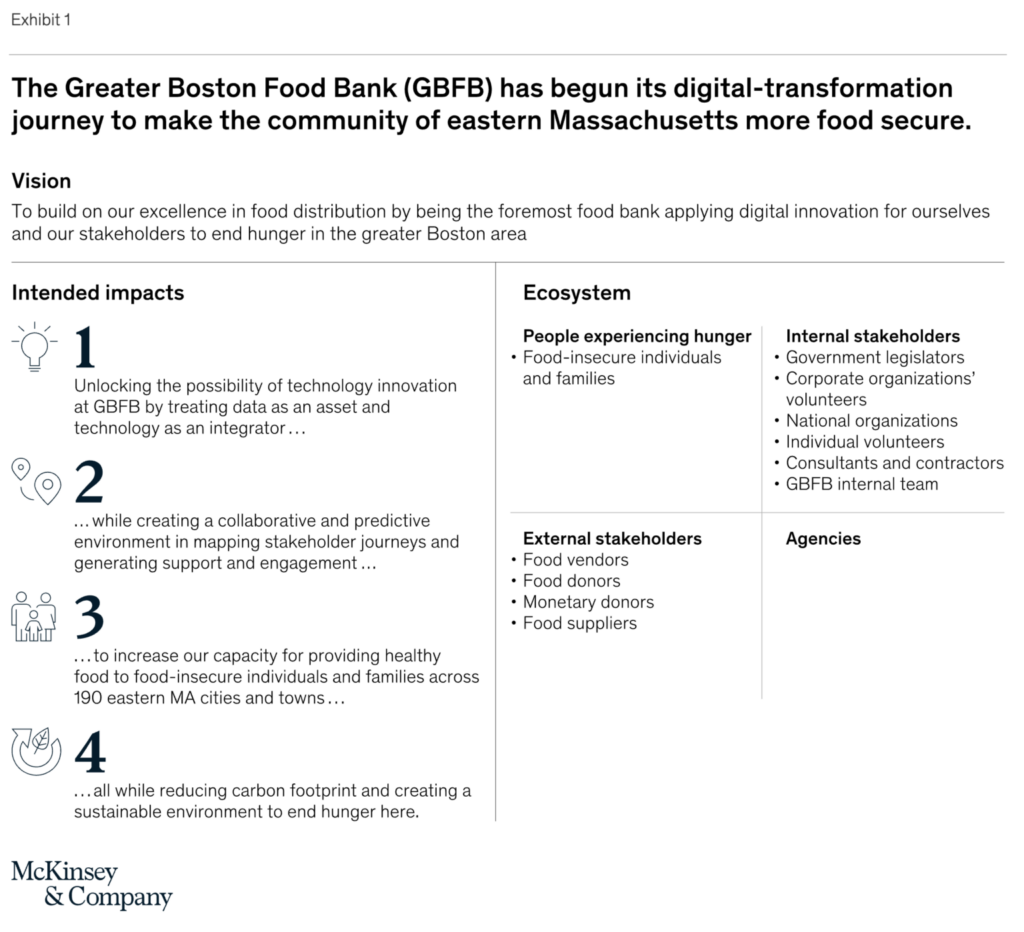
While the GBFB’s digital transformation is still in its early stages, optimising the food bank’s existing tech stack is envisioned to lead to these outcomes:
- Beneficiaries have an easier time seeking food aid and finding information about how to get it. GBFB is looking to incorporate their food-aid recipient’s perspectives and behaviours into their digital customer journey.
- The food bank has better, faster and more efficient ways of communicating with food distribution partners. This includes creating processes for placing orders on digital channels and providing check-in tools for pantries to receive information about food recipients.
- GBFB consistently uses predictive data analytics to enhance their product mix.
- The food bank uses digital check-ins and efficient scheduling to optimise food pickups at their warehouses.
How to walk volunteers through your new digital processes
If your nonprofit is also looking to digitalise your processes or create a unified framework for your different technologies, you may encounter some resistance from your employees and volunteers.
Here’s what you can do to mitigate this problem:
- Set a meeting with personnel and volunteers who will be affected by the digitalisation of a process.
- Review the basic steps of the process to avoid missing any of its vital functions.
- Gather feedback on how the process can be improved using digital tools.
- Acknowledge concerns about the nonprofit digital transformation process.
- Outline the digitalisation process and its effect on everyone’s roles.
- Implement the new technology and communicate all changes to your team.
- Provide training resources to volunteers and personnel so they can get comfortable with the new digital tool.
- Schedule another meeting to discuss the tool’s impact and any changes that may be required.
Leverage digital technologies to rally people to your cause
While the viability of digital transformation tends to be focused on the needs of businesses in the for-profit or private sector, nonprofits are finally realising the benefits of being digital-first. Digital technologies such as cloud services, automation and data analytics open opportunities to engage supporters, improve communication and reduce costs.
Follow the Futr blog for more insights on how our AI-powered platform is helping nonprofits and charities in the UK engage their donors and volunteers at scale. Get in touch with the Futr team to learn how live chat and chatbot automation can streamline your nonprofit campaigns and activities.

